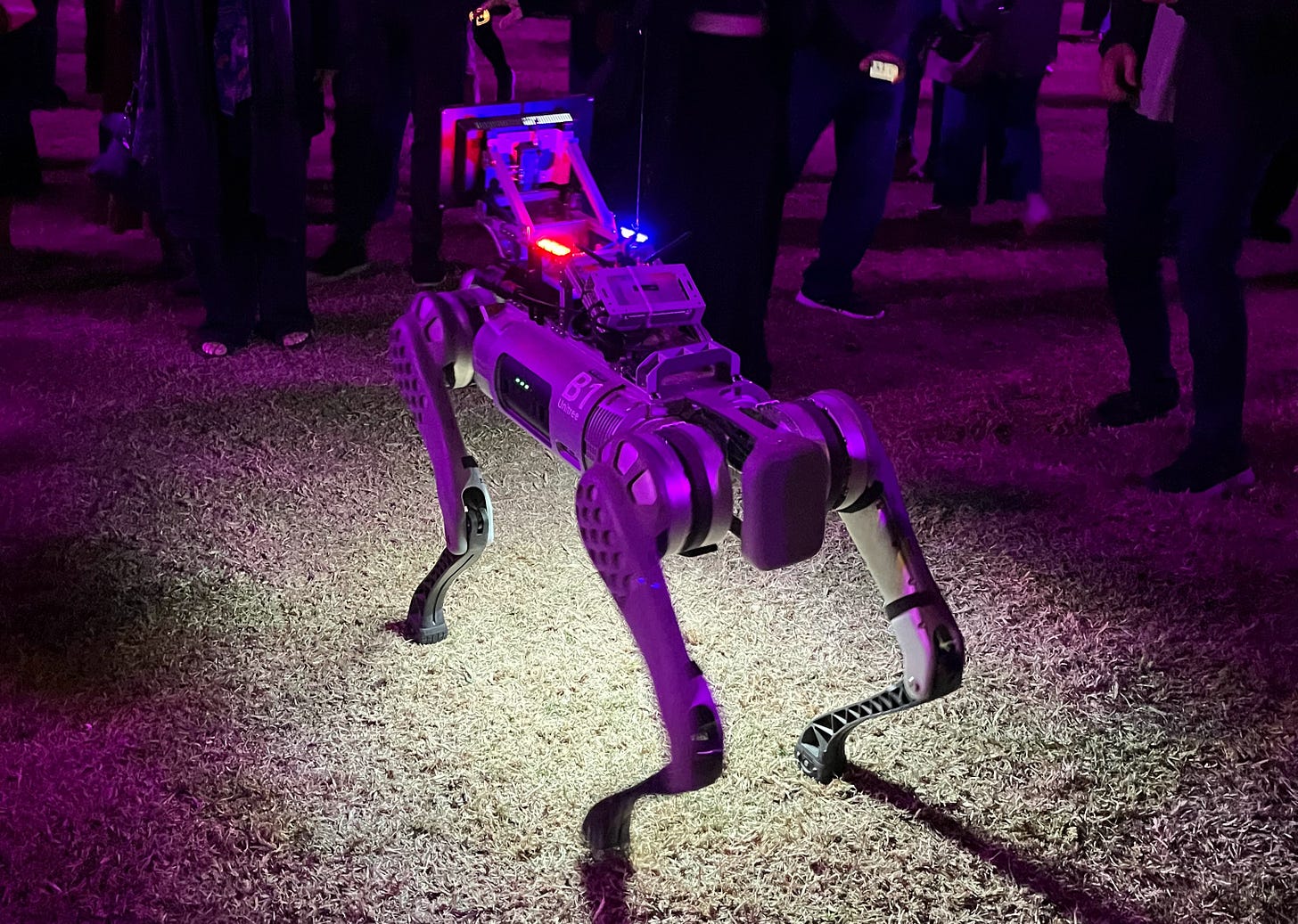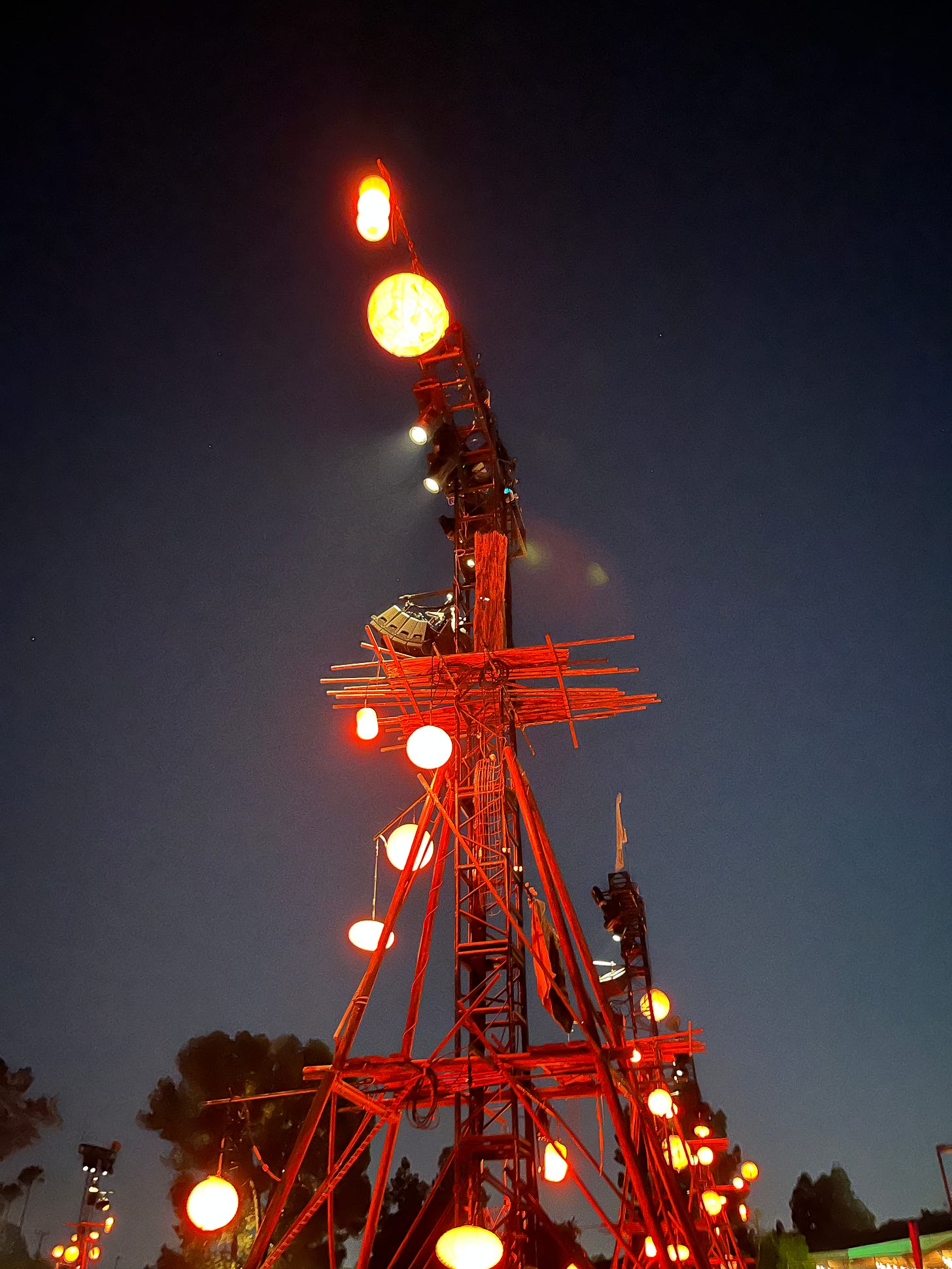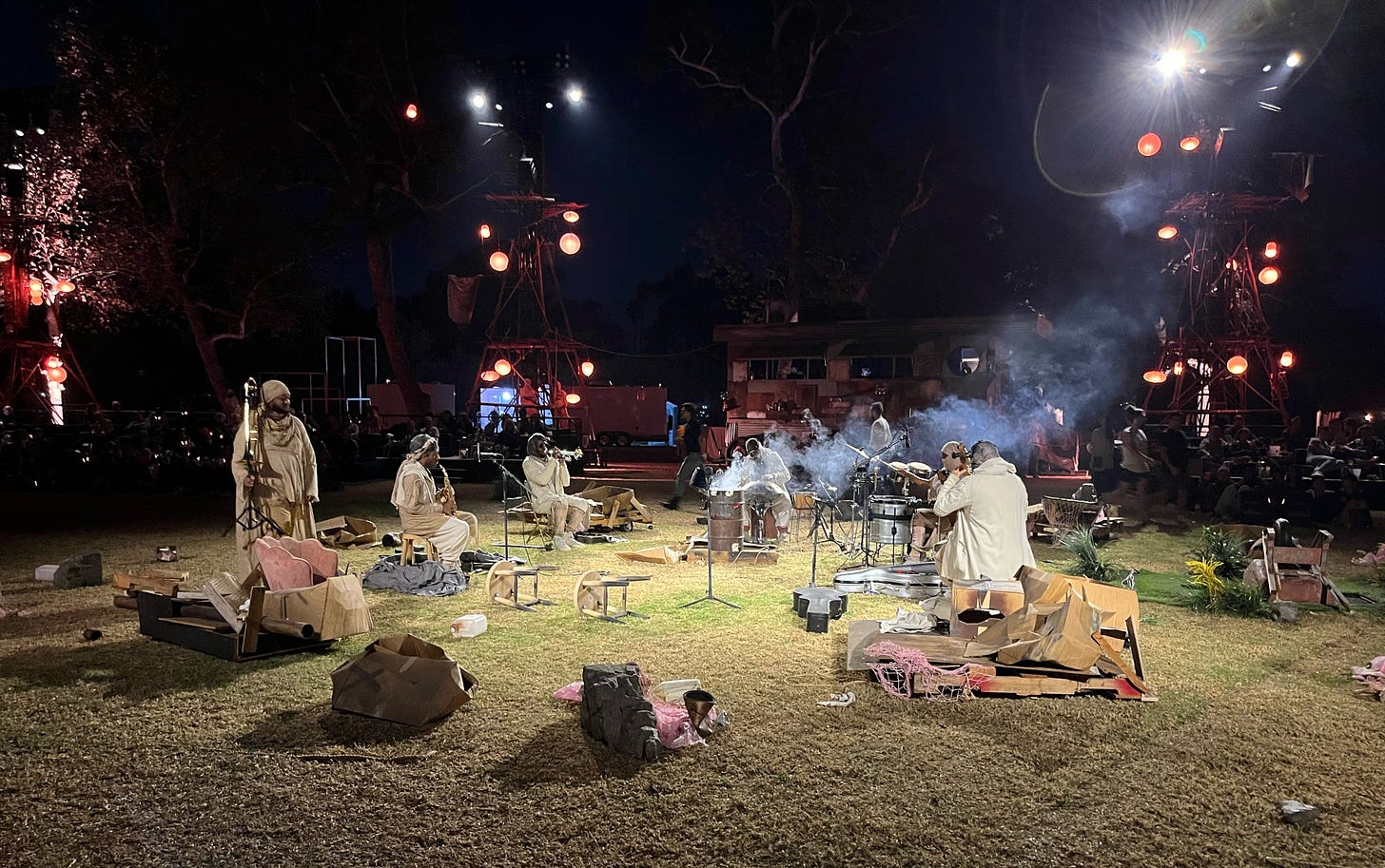"The Cortège" and our ambiguous cybernetic present
Welcome to "Clanker City": an exploration of automation's impact on Los Angeles

A wanderer advances through a desert—well, on a treadmill—to the synth-pop tune of “Alone in Kyoto” by the French band Air.
The performer sports a Bedouin-esque costume, an example of the vaguely Orientalist-meets-Mad Max theme of The Cortège, an utterly singular show currently presented on weekend evenings at the Los Angeles Equestrian Center in Burbank, California.
The Cortège is a little hard to explain. Its name refers to a funeral procession, and the show’s marketing describes the show as a “festive funeral for our times.” Conceived by artist Jeff Hull, a pioneer of participatory experiences, as an ebullient expression of grief, the procession synthesizes a variety of styles that makes it feel oddly timeless.
Combining New Age, jazz and New Orleans-styled marching band music with contemporary street dance, the show’s visual language is equally stunning. Performers wear extravagant costumes that seem pulled from the wardrobe of a Dune movie against a backdrop of drone light shows, fog machines, animatronics, and Waterworld-esque scaffolding. The show follows the aforementioned wanderer through his life—as he finds love, is imprisoned, breaks free, and is eventually hunted own by an oppressive regime, before the titular Cortège honors his memory—featuring fuzzy Muppet-like creatures, a Santa Muerta figure, and Dune-esque mandarins.
This story is completely told in pantomime—and did I mention everyone in the audience, sitting on the grass or the grandstands, is wearing a headset? The show culminates in a silent disco where the audience joins in the procession, before being invited into a neo-Arabesque big tent to place a flower on the deceased and reflect on the experience over herbal honeybush tea. While dark, the tone of the story and performance, as LA Times critic Todd Martens wrote, is thoroughly jubilant. In the climax of the performance, the announcer reads from the names of recently deceased loved ones submitted by the attendees (though celebrities like Robert Redford also made the list).
I was dazzled by The Cortège, but what I found most fascinating about it was its incorporation of robotics. When the hero of the story is pursued by the villainous authorities, he is hunted down by soldiers and their robot dogs—whose “heads” are formed by screens broadcasting the images right in front of them. The quadrupedal robots are ominous at first, but in the show’s final movement—the silent disco involving the audience—the dogs become a source of joy, and audience members can dance “with” the robot dogs, accompanied by their human operators.

The Cortège’s robot dogs thus form an apt metaphor for humanity’s ambivalence to the rise of automation. On the one hand, robots and other automated machines represent a threat to humankind. On the other, they might be useful, and in The Cortège’s final act, they form a wellspring of jubilance.
The fact The Cortège debuted in Los Angeles County is even more telling, but not exactly surprising. Whereas Silicon Valley comes up with these technologies, Los Angeles is often the tech giants’ experimental proving ground. In LA, we have self-driving cars from Waymo and automated food delivery robots from Coco. We have a Tesla Diner (in which robots are involved), and it’s here, like Austin or San Francisco, that we see changes that will shape the rest of the world soon. As a friend from Cyprus told me when I tried to explain Waymos to him—“we’ll see all that stuff on the island in five to ten years.”
So, in that vein, I’d like to introduce The Usonian’s latest miniseries—Clanker City—an exploration of how automation is impacting urban life in Los Angeles. “Clanker” is a satirical derogatory term for robots that was first introduced in Star Wars, and recently the term has become an online meme.
Given that the sci-fi film Blade Runner anticipated Los Angeles would become a hub of robotics in the year 2019, it’s only fitting to explore the automated world of LA in 2025. Over the next few months, we’ll take a look at how automation is rubbing up against America’s most unusual, multipolar megalopolis.
Welcome to Clanker City. Hope you enjoy the ride.
This is the first post in a new Usonian miniseries— “Clanker City.” New posts will come out on about a monthly basis. Become a paid subscriber to support this initiative and our other feeds, plus receive one exclusive Usonian+ article per month. Thanks again, and cheers!



